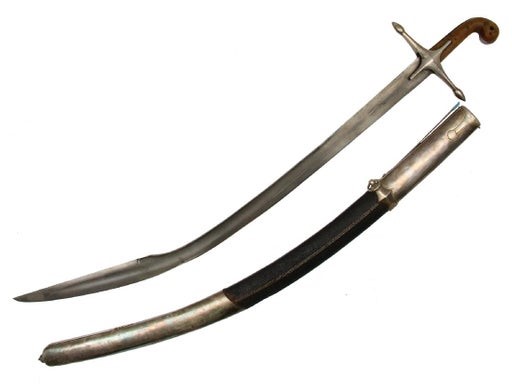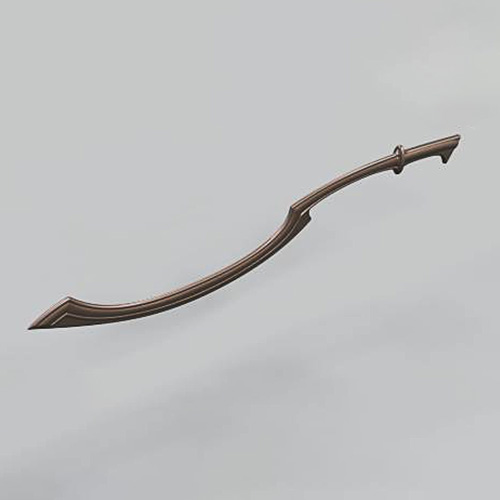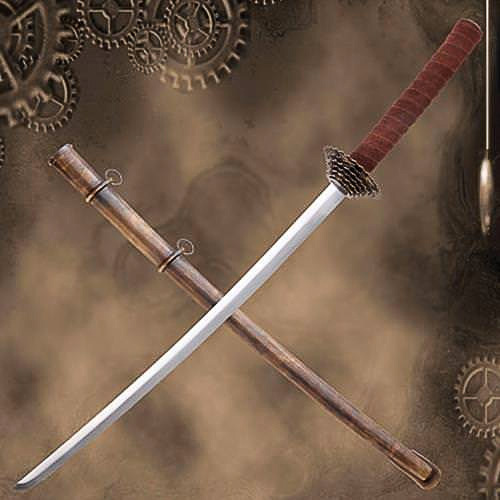Top 15 Deadly Swords in History Ⅱ
The Katana, Japan
More than a feared weapon in movies, books, and video games it was the choice of the Samurai and was a symbol of social class. From 1100 onward dueling and close-quarters combat ruled the day. The slightest delay in drawing your weapon might prove fatal. So a skilled samurai would practice for hundreds of hours to both draws it and attack an opponent in a single move. The Samurai had their reign cut short however by a government ban that sought to limit their power and influence and in 1876 a law was passed that allowed only former samurai lords and po-lice officers to wear the weapon in public places. Knowing the reputation of this famous weapon, the katana continued to be worn and wielded by officers in Japan’s Imperial Army well into WWII. Far from being merely an ornament, it was again used in battle. Above all, the sword was respected and revered due to the sharpness a master could put on the blade. Enough to cut a silk scarf if simply dropped onto the edge! Of course, that could be why it was banned in Japan after the war.
The Kilij, Turkey

The now-iconic look was originally developed by Turkish swordsmiths to maximize power in the slashing stroke. It literally means ‘sword’ in Turkish. It worked so well that much of Central Asia adopted it and even parts of Eastern Europe. The secret lay in the double-edged tip. This flared out at the very top, helping make the end of the weapon stronger and more powerful adding to its momentum. A skilled warrior could use a kilij to cut through human bone in a single slash. Turkish warriors liked the menacing look of the sword as well, thinking it made them look both more fearsome and more regal than their enemies.
The UFLBERHT Swords, Viking
Of all the weapons made by Viking smiths, those crafted by Ulfberht were the most coveted. They were so strong that a warrior wielding one was feared to be a demi-god! What makes these swords so interesting is how they were forged. The weapons were made by heating iron to a temperature of around 3,000 degrees Fahrenheit. Here’s the kicker, that technology didn’t become commonplace until the Industrial Revolution, about 800 years later. What? The ‘Crucible’ steel they produced meant that they were flexible and very strong- almost unbreakable. What’s more, they would have been lightweight and stayed sharp longer making some warriors seem superhuman. Instead of being passed down, they were reverently buried with their deceased owners, giving them elevated status in the afterlife. You didn’t stop being a warrior in Valhalla!
The Khopesh, Egypt

Thousands of years ago the khopesh was considered relatively lightweight and easy to wield. The curved blade was only sharpened on the outside and would have been used to cut, slash and bludgeon an enemy. It was still thick enough and weighed enough to literally beat you to death like a club. At the same time, the hooked shape would have allowed a soldier to disarm his opponent and then attack him in a single move. Many pharaohs were buried with his khopesh by his side and this type of sword continued to be shown in hieroglyphics for a few thousand years, even after use had ceased in battle showing its importance.
Want a unique sword? Feel free to contact us:
Email: lyuesword@hotmail.com
Website: www.lyuesword.com
Custom Sword Page: www.lyuesword.com/Custom-Sword/customization-options/Create-Your-Own-Swords

